
Hip Hip Hooray It’s a Parade
When we were in the Inle Lake area of Myanmar, I asked our guide Min Min if he could take me to a good spot to buy a longyi, a traditional garment worn by both men and women in this far away land.
“Sure,” he said. “No problem.”
So you probably think this blog post is about longyis. Well, I plan to do one soon, but what we ran into on our way to his favorite longyi store in Nyaung Shwe was fascinating.
We happened to be in Myanmar at the time of the “Offering Celebration.”
Yikes. All thoughts of a cute colorful longyi to take home flew right out of my head as I pointed my camera at the colorful procession.
Min Min explained to us that during the whole month of Dazaungmon (8th month on a Myanmar calendar), all kinds of organizations—business, social, cultural, regions and governmental collect voluntary contributions to meet the temporal needs of the monasteries.
Things like alms bowls, fans, slippers, water strainers, umbrellas, razors, mats, brooms, towels and the most important item are the saffron robes worn by the monks.
All the offerings are hung on a pyramid shaped wooden frame called a Ba-de-tha-bin and, according to Min Min, is equivalent of a mythical cornucopia, the symbol of plenty or abundance.
We saw not only the community people parading with their offerings, but we saw students, teachers and musicians enjoying the festivity. Clearly this was a big deal.
And yep, we eventually made it to the longyi store where I bought one as a great souvenir of this experience. More about that later. Here are some scenes of the parade to enjoy.

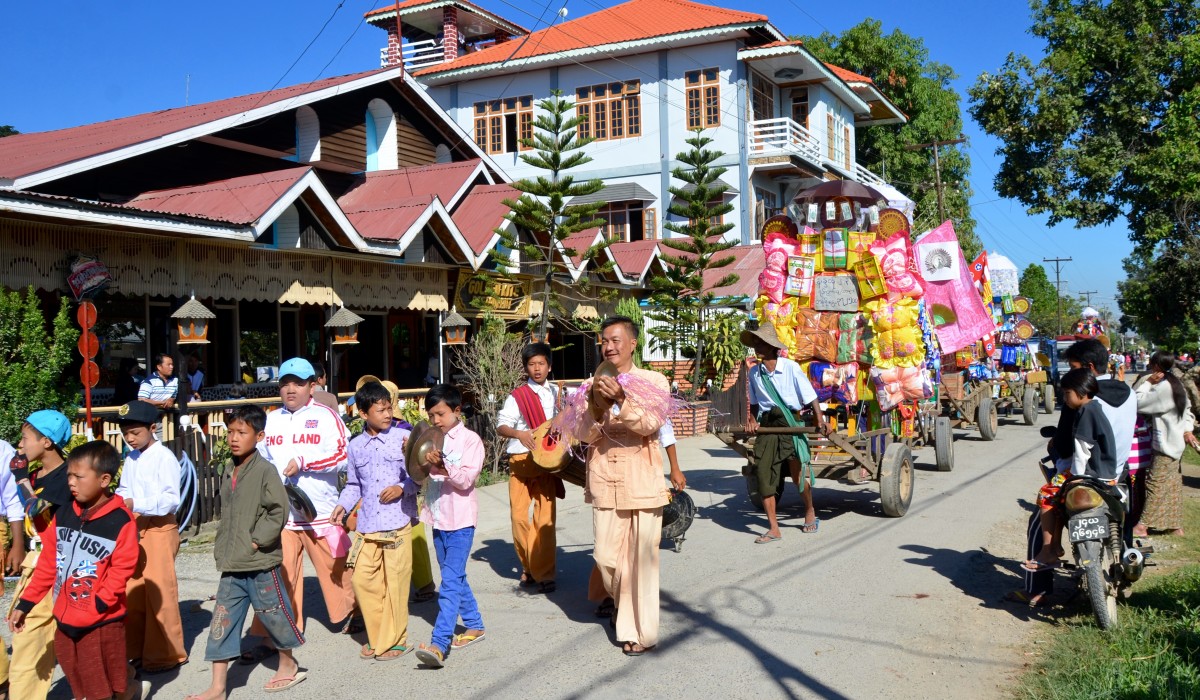














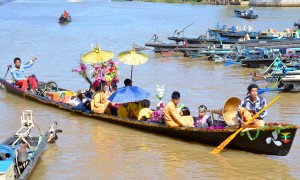
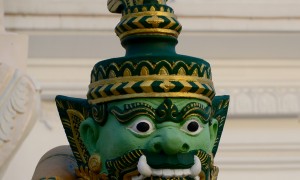
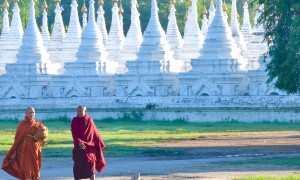
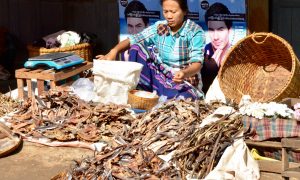
Comments
4 CommentsJulie Lerner
Mar 16, 2016Hi Susan,
I used to be able to pull your fantastic photos from the newsletter. Is this still possible?
Thank you,
Julie
Susan J. Smith
Mar 16, 2016I don’t see why not. Has something changed?
Kathy
Mar 16, 2016What a fascinating parade! It is fun to enlarge your pictures to see what the offerings actually are!
Susan J. Smith
Mar 16, 2016All kinds of things that the monks need. There are half a million monks and novices in Myanmar. The people take care of them. In return, the monks take care of the spiritual needs of the people. Buddhism is such a central part of life in this remote country.